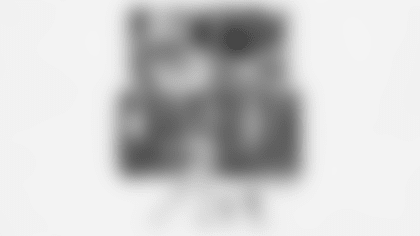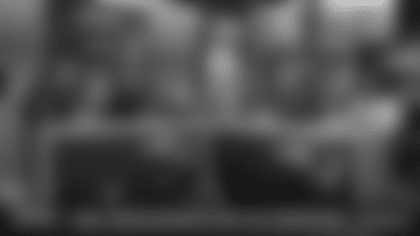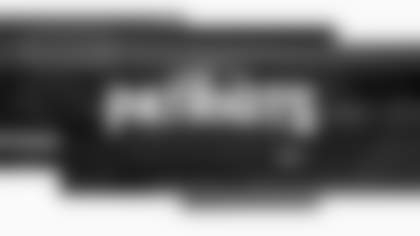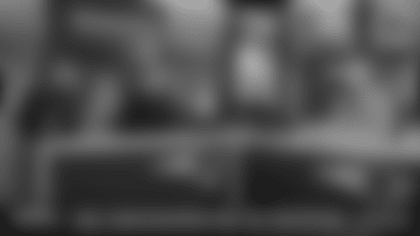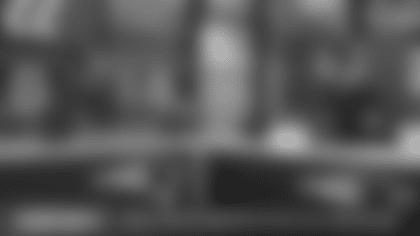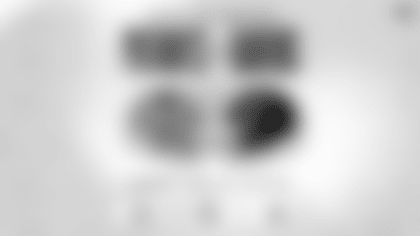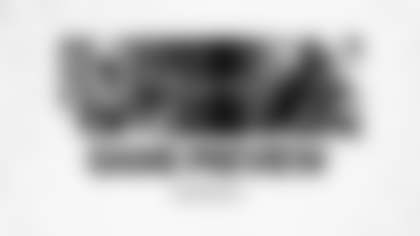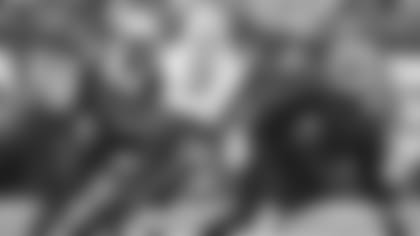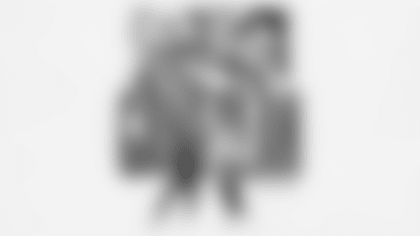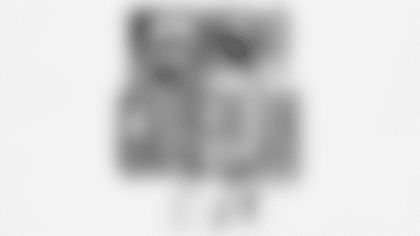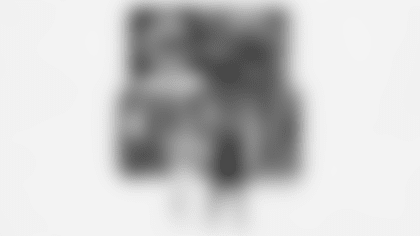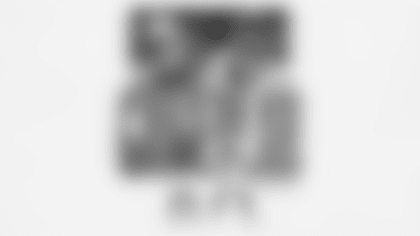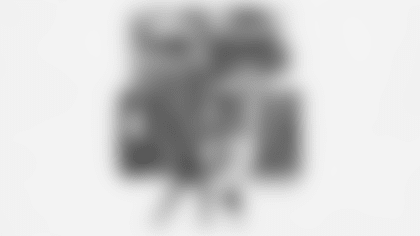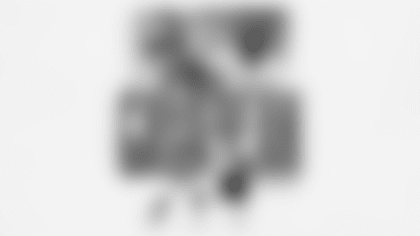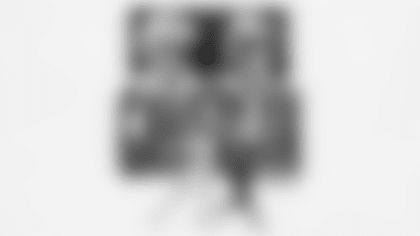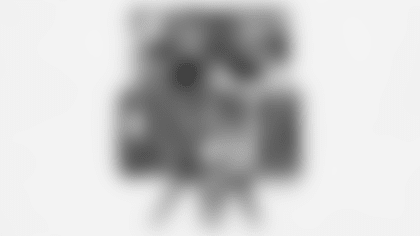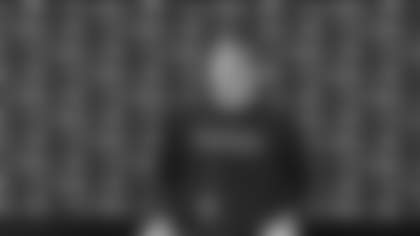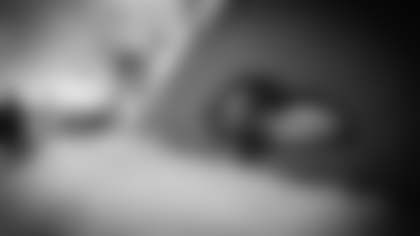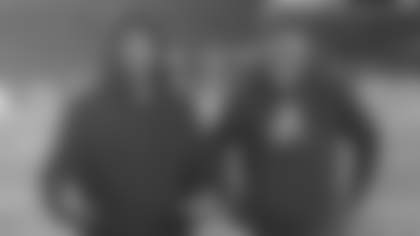The Patriots kick off the second half of their season in the driver's seat for at least a wild card berth in the AFC playoffs and only one game back in the loss column in the AFC East.
Although the playoff picture suggests New England is in the hunt, the state of the Patriots offense gives a sense of false hope to the likelihood that Bill Belichick's team is truly a contender in a crowded AFC, with a three-game stretch coming off the bye as a litmus test.
The Patriots will return from a week off in a high-stakes divisional rematch against the New York Jets on Sunday at Gillette Stadium. For the first time since 2015, the Jets and Patriots will meet with both teams above .500 after Week 10 with the Jets trying to snap a 13-game losing streak against Belichick's team.
New York was also idle this past week after a statement win over the Bills pushed their record to an impressive 6-3 to hold the top Wild Card spot in the conference heading into Week 11.
For New England, the top priority during the bye week was getting an offense trending towards its worst finish in Football Outsiders' DVOA metric of the Belichick era back on track (26th). However, repeating a defensive masterclass where they forced Jets quarterback Zach Wilson to throw three interceptions in a five-drive span is likely the key to victory again this week.
Like the Patriots offense to some extent, the Jets offense with Wilson in his second season is a different operation when they're staying ahead of schedule and winning the trenches battles.
In their win over the Bills, the Jets were successful on 58% of their early-down plays. By performing more effectively on first and second down, Wilson, who has struggled under pressure this season like Mac Jones, was only under duress on 24.1% of his drop-backs. The early-down success led to a five-yard average to go on third down, which allowed them to have more run-pass balance on the money down (seven passes, six runs). The results were a far more efficient (+0.07 EPA/play) and cleaner day (one turnover) on offense.
Comparatively speaking, New England's defense held the Jets to a 34% success rate on early downs causing the Jets offense to live in third-and-long (8.1-yard average). Wilson threw two interceptions on third down, while the Pats pressured him on 41.9% of his drop-backs since New York had to pass on third down on 13 of their 14 attempts.
With only two weeks between meetings, the Jets won't reinvent the wheel offensively to form a completely different game plan. Instead, it'll once again come down to execution.
As we just outlined, the Jets are more dangerous offensively when running the ball effectively and setting up their play-action/RPO passing game. You can see repeat plays on their film against the Bills with their trap and counter schemes out of the gun, gaining 5.5 yards per carry.
One week earlier, the Patriots completely shut down these schemes (3.4 yards per rush) by aggressively attacking pulling blockers at the line of scrimmage and accounting for cutback lanes out of split-safety shells. The two-deep safeties then helped them pass off play-action route combinations downfield to control the game on first and second down.
| Stat (via PFF) | Zach Wilson Under Pressure | NFL Rank (out of 39) |
|---|---|---|
| Completion % | 21.2% | 39th |
| Turnover Worthy Play % | 14.3% | 39th |
| Passer Rating | 6.6 | 39th |
From there, the Patriots feasted on Wilson's weakness as a passer while under pressure to force three turnovers by hurrying the Jets quarterback into mistakes he's prone to make. The pressure design of choice for Belichick's defense was replacement blitzes, where the Pats bring pressure from typical coverage alignments and drop rushers off the line of scrimmage.
For example, Patriots linebacker Ja'Whaun Bentley's second-quarter interception was caused by an effective overload blitz off the right side. With Jabrill Peppers joining the rush from the quarterback's right, pass-rusher Josh Uche dropped off the line of scrimmage after starting over the left tackle to keep seven coverage players in a cover-two zone. Peppers forms a three-man stunt against two Jets blockers, hurrying Wilson into a sped-up throw, and the ball sails on the Jets quarterback over the head of his intended receiver and into the hands of Bentley.
Here's another version of the Patriots replacement pressure where both edge rushers drop off into coverage and Bentley blitzes through the middle. This time, Matthew Judon takes out two receivers in his coverage drop, and Wilson rolls to his right when he feels the pocket collapsing. The next step in the plan was to force Wilson into the sideline, where he had to make a decision before running out of real estate. In this instance, the result of the play is one of Wilson's six throwaways in the game, setting up a third-and-18 from his own end zone.
New England's defense knows the formula to control the game when the Jets have the ball, and it all starts with winning on first and second down to set up their pass rush to wreak havoc.
Patriots Offense vs. Jets Defense
As illustrated by holding the Bills to 17 points and causing four turnover-worthy plays by Josh Allen, the Jets sixth-ranked defense by DVOA is one of the NFL's best units.
The last time these two teams met, the Jets defensive front took over the game against a Patriots offensive line still searching for answers. New England was down starting center David Andrews, causing a domino effect on the interior at left guard, while right tackle Marcus Cannon allowed a game-high eight hurries. The Jets amassed a 38.5% pressure rate on Patriots quarterback Mac Jones without blitzing much (25%), which is a hallmark of head coach Robert Saleh's scheme (lowest blitz rate in the NFL), and were a roughing the passer penalty away from a 17-3 lead going into the half.
New York's game plan held Mac Jones to a season-low 4.7 air yards per pass attempt and only one completion of 20-plus air yards on a corner-stop route from Hunter Henry off play-action. The Pats QB finished the game with just three completions over ten yards, going three-for-six with an interception on passes down the field on a mostly anemic day for the offense.
With Saleh's zone structures designed to take away big passing plays, Jones is far from the only quarterback to struggle to throw down the field on the Jets defense. This season, the Jets are seventh in DVOA on deep passes (over 15 yards) with only a 34.8% opponent completion rate (fifth-best in NFL).
Instead of attacking the strength of the New York defense by throwing downfield, the Patriots ought to take advantage of the numbers they'll have underneath the coverage and in the box. At times, they had successful plays where they did just that against the Jets a few weeks ago.
Although the Pats need a better performance from their O-Line, there was an interesting aspect of the Saleh-Patricia chess match that they could exploit this time. Surprisingly, the Jets, whose base system is the Seattle-3 scheme, were in two-high safeties shells most of the game. Knowing they could stifle New England's running game with their defensive line, the Jets were in quarters coverage on nine coverage snaps, and then rotated their safeties from those two-high shells into their cover-three schemes.
"That's what Saleh did in San Francisco. I'd say what he did in San Francisco is what he's doing now which is a little different than what Pete [Carroll] does or did," head coach Bill Belichick said.
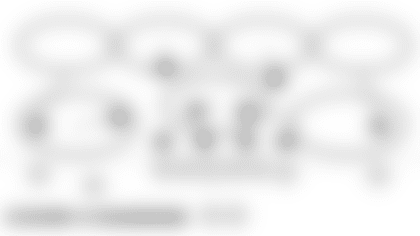
Before highlighting a few of their positive plays, let's first explain the tenants of a quarters (cover four) defensive structure. With four deep zones across the field and four in the rush, the defense only has six defenders in the box at the snap and three short zones. That leaves this coverage structure vulnerable to the running game and shorter throws.
After the game declared itself a two-high coverage plan, the Patriots began to stress the underneath coverage with quick-game concepts and run-pass options. The RPO schemes from spread formations led to the Jets lightening the box in their split-safety zones, and the Pats took advantage by running inside zone and power runs for positive gains. When the Jets did commit more numbers to the run, Mac threw the ball to the screen option on the perimeter.
The other successful scheme was to flood the underneath zones with quick-game concepts, such as snag concepts, where the curl/flat defender is in conflict. Above, the underneath linebacker stays with the inside snag route, so Jones throws to an open Damien Harris in the flat.
When the Jets go to man coverage on third downs, both the Pats and Bills had success with pick plays out of empty formations against New York's coverages.
New England's offense might not be the most explosive group you've ever seen on Sunday, but they can play a turnover-free brand of football and take profits with this style of play. In general, it's a good formula for them moving forward until they straighten out their offensive line.
Key Matchups
1. Pats LG Cole Strange/Isaiah Wynn vs. Jets DL Quinnen Williams
We all remember how Williams took over the game when the Patriots had the ball in the Week 8 contest, finishing with a sack, three quarterback pressures, and a tackle for loss. Assuming Strange gets a longer leash this time, the rookie's biggest problem is winning hand-fighting battles (rip, chop, and swipe moves). Williams's explosive first step allows him to use a bull rush with a rip move finisher to turn a quicker corner on the inside. Strange needs to get stronger and more nuanced with his hand usage in pass protection, or he might get benched permanently.
2. Pats RT Yodny Cajuste/Isaiah Wynn vs. Jets EDGEs John Franklin-Myers/Bryce Huff
The other weak link on the Patriots offensive line in recent games is at right tackle, where Cajuste started against the Colts and allowed five QB pressures in pass protection. Franklin-Myers and Huff, an underrated speed rusher in the Uche mold, combined for six QB pressures, a caused interception (Huff), and a sack (Franklin-Myers). The Pats desperately need reliable right tackle play down the stretch, or their issues on offense will continue.
3. Pats S Kyle Dugger vs. Jets TE Tyler Conklin
With Dugger sidelined due to an ankle injury back in Week 8, Conklin had a huge game with six catches for 79 yards and two touchdowns, and both touchdowns came on third down. The Pats will have their top cover safety back for the rematch and need Dugger to take away Wilson's go-to target in the red zone.






